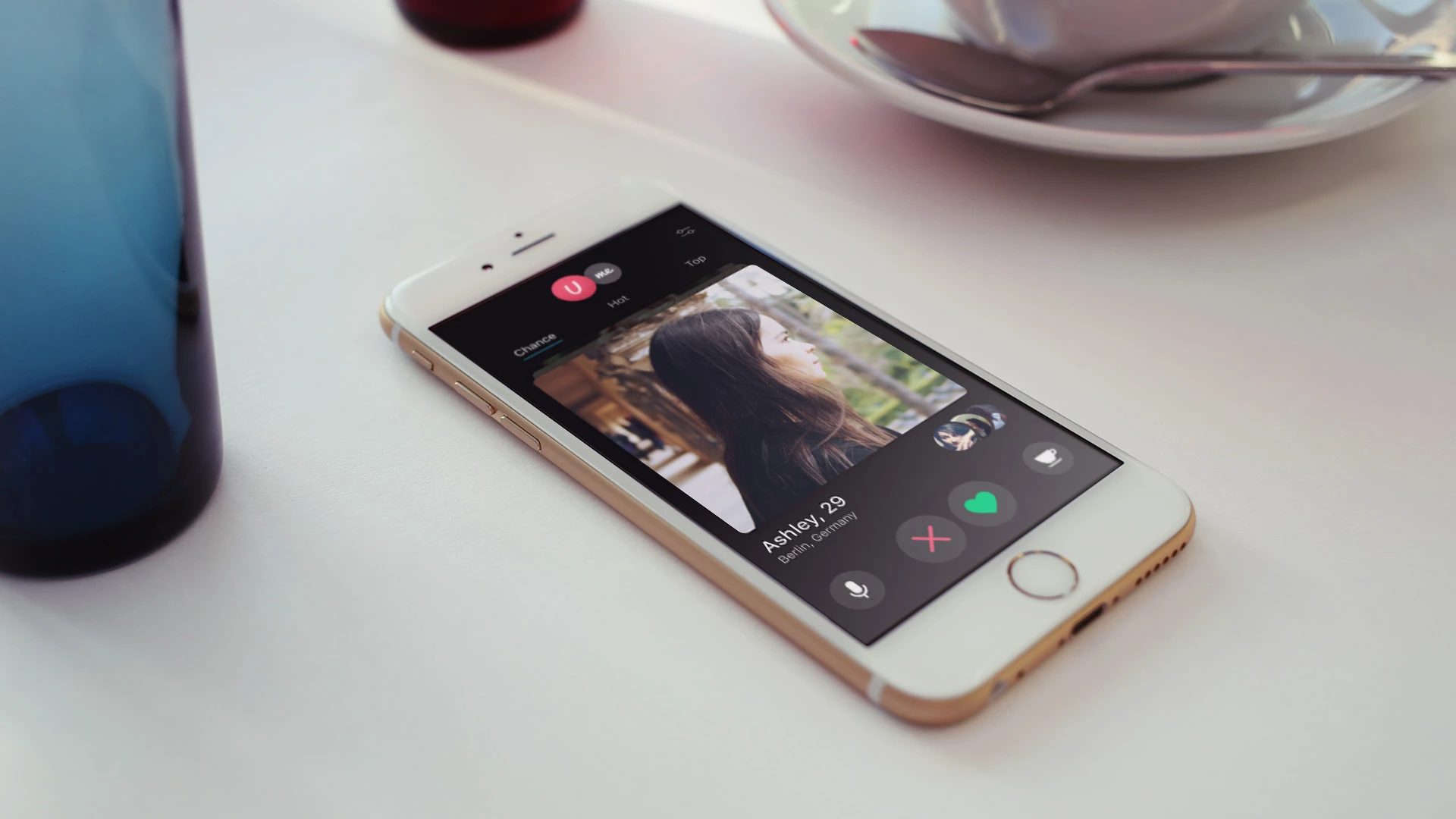
If you're thinking about launching a dating app, you're already late to the party — unless you do it differently. Tinder, Bumble, Hinge — they’ve nailed the broad market. What they haven’t done is solve for the thousands of unmet needs in how people actually want to connect.
That’s where your opportunity is. Whether it’s a niche community that feels ignored, users frustrated by endless swiping, or a new approach to building trust — the next successful dating app won’t be a clone. It’ll be a solution.
In this guide, we won’t walk you through a surface-level checklist of “must-have features.” Instead, you’ll get a realistic, experience-backed blueprint: from shaping your concept and choosing the right features, to avoiding common pitfalls and scaling with purpose.
With extensive experience in mobile app development, we at Stfalcon know how to create products that stand out. Whether you’re targeting a niche audience or rethinking what dating apps can be, this article will show you how to create a dating app that people actually want to use.
The Evolving Dating App Market: Beyond Tinder
Tinder may have popularized swipe culture, but it's no longer the blueprint for success. In 2025, the dating app space rewards originality, purpose, and user-centric innovation, not carbon copies of what’s already out there.
Beyond Tinder’s Shadow: New Archetypes That Work
- Bumble flipped the script by giving women the first move — a small shift that led to less spam, more respect, and a powerful brand built on empowerment.
- Hinge abandoned infinite swiping in favor of thoughtful prompts and profile depth, positioning itself as the app that wants users to delete it — because they found someone.
- Niche platforms like Christian Mingle, JDate, and Grindr thrive not by scale, but by fostering identity-driven communities where users feel seen and understood.
Success lies in differentiation, not imitation. When considering how to make a dating app, the first and most critical step is to define a unique value proposition that goes beyond a simple swipe mechanic. The most valuable apps are not clones, but platforms that solve a specific problem for a particular audience.
Emerging Trends to Watch
- AI-driven matchmaking that goes beyond preferences to predict emotional compatibility
- Video-first interactions (e.g., profiles, speed dates, voice intros) to build trust
- Emphasis on authenticity over polish — less Photoshop, more real-life content
- Virtual events and hybrid experiences, turning dating apps into community platforms
Want a web app that does more?
Let's build a solution that's smart, sleek, and powerful.
Alina
Client Manager

Dating App Types Matrix: Choose Your Direction
Before you build a dating app, you must decide what you're building for. The market has diversified into distinct archetypes, each serving a unique purpose and audience. This matrix offers a framework for understanding these different directions, helping you align your vision with a proven model.
| Type | Target Audience | Core Mechanic | Examples |
|---|---|---|---|
| General/Mass-Market | Everyone (18–40) | Swipe/match | Tinder, Badoo |
| Niche-Based | Religion, age, interests | Filtered discovery | JSwipe, SilverSingles |
| Serious/Relationship-Oriented | People seeking long-term partners | Questionnaires, compatibility scoring | Hinge, Coffee Meets Bagel |
| Casual/Events-Based | Spontaneous daters | Time-limited matches or meetups | Thursday, Happn |
| Gamified/Experimental | Gen Z, open-minded users | Games, avatars, virtual gifts | Kippo, Snack |
| Experience-Driven | Users who prefer to connect over shared experiences | Matching based on shared activities or events | Meetup, Hey! Vina |
| Social-Discovery | Users seeking broader social circles or platonic connections | Connects people beyond just romantic intent (friendship, networking) | Bumble BFF, VINA |
To make a dating app, focus on a clear value proposition instead of chasing feature trends. What problem are you solving, and for whom? Are you helping busy professionals save time? Creating safer dating experiences for marginalized communities? Helping users connect more authentically?
The more specific your answer, the more likely your app is to resonate — and stand out. Great dating apps start with a real unmet need, not a cloneable feature list.
Core Dating App Features That Actually Matter
Successfully building a dating app means getting the foundational features right. These are the cornerstones of safety and user experience, and they must be strong, dependable, and customized to the special value that your app offers. These are the essential features you should concentrate on in order to develop an MVP (minimum viable product), which is a slim but useful application that you can test with actual users.
Profile Management
Provide users with more than a brief bio and a picture. Allow them to express themselves through brief videos, tags, or prompts.
Example: Hinge excels at this with its prompt-based profile questions ("My greatest strength," "I'll fall for you if..."), which entice users to share more about their personalities and values, and initiate more fruitful conversations right away.
Matching Mechanisms
You must go beyond swiping if you want to create a dating app that will be unique in the marketplace. To provide better matches, use algorithmic recommendations, compatibility tests, or carefully chosen daily suggestions.
Example: Coffee Meets Bagel, for instance, offers a small selection of carefully chosen daily matches (or "bagels"), moving away from endless swiping. This method puts quality and careful deliberation ahead of snap judgments.
Secure In-App Communication
Provide users with tools to start conversations and enable rich messaging with support for emojis, media, voice notes, and even video.
Example: Bumbl incorporates audio and video chat features right into the app, going beyond text messaging. This improves convenience and safety by enabling users to "vibe check" and get to know one another better without exchanging personal phone numbers.
Notifications
Smart, timely push notifications for new matches, unread messages, and user engagement reminders are key to retention.
Account & Settings
Let users control their experience — from visibility and filters to privacy, data download, and account deletion.
Admin Panel
Behind the scenes, you need moderation tools, user metrics, content review systems, and ban/report handling — all manageable from a central dashboard.
Safety
Trust is essential. Offer profile verification, reporting/blocking features, and content moderation (human or AI-driven).
Example: Bumble's photo verification feature forces the user to take a selfie recreating a specific pose. It is reviewed by a combination of AI and human moderators to verify the profile pictures belong to a real individual, and it's a great way to combat fake profiles and build user trust.
Strategic UX & Design Considerations
When creating a dating app, design isn't just about looks — it's also about making people feel a certain way, connect, and trust. A well-crafted interface can reduce friction, spark emotion, and turn occasional users into loyal community members.

Designing for Connection, Trust, and Belonging
Every design choice must be made to reduce friction and build an emotional connection. That means:
- Decreasing Cognitive Load: Avoid presenting users with too many options or overwhelming screens. The flow needs to be simple to follow, engaging users smoothly into meaningful interactions.
- Promoting Authenticity: Design aspects to enable real self-expression, such as comprehensive profiles, video clips, or unique prompts, making users feel confident that they are in contact with real people.
- Celebrating Matches: Use microinteractions, animations, and rewards to deliver delightful moments of satisfaction when a match succeeds. This ensures the experience is rewarding and memorable, generating user engagement.
Our UI/UX Process: Building an Experience That Connects
At Stfalcon, we are convinced that a great user experience is the product of a strict, team-based process. The design process is integrated in every development stage:
- Discovery Workshops: We begin with a comprehensive session to understand your vision, target audience, and value proposition.
- User Flows & Wireframes: We map the entire user experience, creating plain, structural drawings to define the app's structure and navigation.
- High-Fidelity Prototypes: We build functional prototypes that mirror the app's look and feel, so that we can test and refine the design before writing a single line of code.
- Iterative Testing: Our design process is not a one-way street. We continuously gather user feedback and conduct usability tests to identify pain points and refine them so that the end product is intuitive and delightful.
Tips from Our Design Team
- Keep it clean: Steer clear of clutter. Keep the focus on people rather than the interface by using big images and user-friendly layouts.
- Delight matters: Small moments are made memorable by microinteractions, such as subtle animations or confetti on a match.
- Be inclusive: Provide options for gender, orientation, and identity that are flexible for both sign-up and search filters. Visuals and design language should be inclusive.
Building the Right Tech Foundation
The success of a dating app is largely dependent on selecting the appropriate technologies to guarantee speed, scalability, security, and a flawless user experience.
Frontend: Fast, Flexible, and Cross-Platform
In order to swiftly reach users on both iOS and Android, we advise:
- For cross-platform development, Flutter or React Native offer a single codebase and a quicker time to market.
- Native development (Swift/Kotlin) for apps with highly custom animations or performance-critical components.
Backend: The Engine Behind Smart Matches and Real-Time Interaction
The backend handles real-time chat, matchmaking logic, user data, and payment processing — it needs to be secure, scalable, and fast:
- Languages: Node.js (for high-speed, scalable network applications), Python (for flexibility and data processing), or Ruby on Rails (ideal for rapid application development)
- Databases: PostgreSQL (structured data), MongoDB (flexibility), Redis (caching for speed)
- Hosting: Scalable cloud platforms like AWS, GCP, or Firebase
Real-Time Chat
Instant messaging is essential — and users expect it to work flawlessly:
- Technologies: WebSockets for real-time messaging, or third-party tools like Twilio or Sendbird for faster integration with features like typing indicators, media sharing, or message history.
APIs & Integrations for Enhanced Functionality
Your app will rely on a network of external services to function. We integrate with various APIs for:
- Payment gateways (Stripe, PayPal) for in-app purchases and subscriptions.
- Geolocation services (Google Maps, Mapbox) for proximity-based matching.
- Authentication APIs (Facebook, Google, Apple) for secure login.
- AI/ML APIs for advanced compatibility suggestions and image moderation.
- Communication APIs (Twilio, Vonage) for video and voice chat.
AI/ML: From Basic Logic to Advanced Insights
AI and machine learning can be integrated at various levels. Initially, this might be a simple rule-based algorithm for matching. As your app grows, you can evolve to more sophisticated systems that use advanced user behavior analysis to suggest better matches, flag suspicious activity, and enhance user experience.
Architecture Tip: Plan for Scale
Don’t build a monolith. Use a modular architecture that separates user management, messaging, matching, and admin tools. This keeps the app flexible, easier to maintain, and ready to grow with your user base.
Step-by-Step Dating App Development Process
While each dating app is unique, the underlying development process has a tried-and-true template.
1. Discovery Phase
This is where we lay the strategic groundwork. Here, we start with collaborative workshops to have a clear vision and picture of your audience. We both work together to prioritize features for your Minimum Viable Product (MVP) and create a roadmap for the future. Finally, we check the technical feasibility of your idea to ensure it is not only possible but also scalable.
2. UI/UX Design
Our design team moves from wireframes to clickable prototypes, then high-fidelity visuals — all centered on intuitive flow, emotional resonance, and accessibility. It culminates in final designs, a pixel-perfect development blueprint.
3. MVP Development
This is the stage of dating app development where the code is written. Our developers create the basic functionality developed in the discovery phase. This includes concurrent backend and frontend development, as well as critical third-party integrations within real-time chat, payments, and analytics solutions.
4. Testing
Quality above all. Before release, our QA team rigorously conducts functional testing to ensure all features work as intended, usability testing to ensure a smooth user experience, and security testing to protect sensitive user data.
5. Launch (Beta → Public)
We recommend a soft launch to a focused user base in order to receive feedback, refine the product, and grow confidently to an audience at large. It allows us to refine the app and address issues before the eventual public rollout, providing us with a positive feedback mechanism to improve on the fly.
Building Trust and Monetizing Success
Your app's long-term success depends on two crucial factors: the trust you gain with your users and the sustainability of your business model. Both must be infused in the very fabric of your app right from the beginning.
The Imperative of Trust & Safety
Safety is of utmost importance in dating apps. Individuals are sharing their personal details and emotionally exposing themselves to one another, so safety, privacy, and integrity can't be an afterthought either. A single security incident or safety event can be disastrous.
Data Privacy & Compliance
Apps need to comply with privacy laws like GDPR, CCPA, and others from day one. That is to say:
- End-to-end encryption for sensitive data
- Explicit user consent mechanisms
- Transparent data handling and deletion policies
We embed these standards directly into the architecture, not just to avoid fines, but to build user confidence and trust.
Combating Fraud & Fake Profiles
Fake accounts ruin user experience and erode platform credibility. We implement:
- Photo verification, social media linking, and optional identity checks
- AI/ML tools for detecting suspicious behavior and automation patterns
Based on our experience, a layered verification system significantly reduces spam and fosters trust from the outset.
Robust Moderation & Reporting Systems
Effective moderation combines:
- Automated filtering (e.g., for explicit content or banned language)
- Manual review tools for flagged users or media
- Clear and intuitive in-app reporting mechanisms
We help clients build workflows for both community health and platform protection.
At Stfalcon, a security-first approach is fundamental to our development process. Our experience building similar platforms allows us to minimize vulnerabilities and implement robust anti-fraud and moderation systems based on real-world best practices.
Strategic Monetization Models (Beyond Just Premium)
Monetization shouldn’t feel like a paywall — it should enhance the experience while aligning with your value proposition.
- Freemium & Subscription Tiers: This is the most common model. It is the strategy of offering a free base version to acquire a huge user base, and then providing solid premium upgrades—e.g., unlimited messaging, profile boosts, or premium search filters—via a paid subscription.
- In-App Purchases (IAPs): Transactional one-time purchases of unique virtual goods or premium services, such as "Super Likes" or a peek at who has liked your profile, can be a significant revenue stream without a complete subscription.
- Advertising: If used, adverts need to be native or contextual and clearly intended to disturb the user experience as little as possible. For example, a sponsored profile or a subtle banner.
- Creative Monetization: In addition to traditional models, you may find creative monetization streams that fit the mission and goals of your app. Some examples are:
- Event Ticket Sales: Partnering with local venues or hosting your own in-app virtual events, like speed dating nights.
- Affiliate Partnerships: Promoting complementary products like gift delivery, date nights, or travel packages.
- "Matchmaker" or "Concierge" Services: Offering a higher-tier, human-assisted service for ultra-premium users seeking highly curated matches.
Our Expertise
We collaborate closely with clients to create unique monetization plans that take into account their value proposition, app type, and user base. In addition to developing features, we also assist you in creating a monetization plan that is sustainable and incorporated into the design of your app from the beginning, all while perfectly matching your app's target market and distinctive value proposition.
Stfalcon’s Experience in Dating App Development
With over a decade of experience in web and mobile development, Stfalcon has carried out multiple projects related to dating apps in particular.
Stfalcon.com has developed a social discovery application for iOS and Android platforms — imbi. A clear interface and UX we created worked on the app's main idea: to encourage users to get together for spontaneous, friendly meetings.
Another notable case is UME — a dating app available for both Android and iOS. Today, people prefer to communicate via smartphones, so using them for finding new friends and partners is a logical step. For the UME startup, we built a prototype, developed iOS and Android apps, and created an API.
For various real-time functions in UME we have written our own service responsible for processing events from the publisher (it’s the main app in our case). It sends info about a new event (such as a message or match) to the server, and the server sends this event to the client:
- if the user is online — via sockets
- if the user is offline — via push-notifications or email
This solution is simple and doesn’t rely on any particular programming language or framework — messages are exchanged via the AMQP protocol.
Final Words
A successful dating app isn’t just a collection of swipe features — it’s the result of thoughtful planning, a strong technical foundation, user-centric design, and clear market differentiation. Whether you're building for a niche audience or rethinking how people connect, your chances of success depend on solving real problems, not replicating existing solutions.
The development of your app should be viewed not as a one-time project, but as a strategic, long-term investment. It's an ongoing commitment to scaling your infrastructure, refining your features, and continuously listening to your user base.
Ready to validate or build your own dating app? Talk to a team that’s done it before — and knows what it takes to get it right from day one. Contact us, and let’s discuss your future market success!
FAQ About Creating a Dating App
How much does it cost to build a dating app?
The cost to create a dating app varies significantly, but you can expect a range from $50,000 - $100,000+ for a basic MVP with core features. A full-featured, scalable app with advanced functionality, custom design, and robust security can easily exceed $150,000. The final price depends on complexity, team size, and the chosen technology stack.
How can I test my dating app idea before investing in full development?
You can begin creating a dating app with a Discovery Phase to validate your concept, which involves conducting market research, analyzing competitors, and creating user personas. To test the core idea, a clickable prototype or a simple landing page that gauges sign-up interest can provide valuable feedback without the high cost of full development.
How do I keep users engaged after the initial sign-up?
Engagement is driven by a steady stream of quality matches and meaningful interactions. Key strategies include intelligent push notifications for matches and messages, a compelling and intuitive user experience, and features that encourage daily usage, such as gamification elements or limited daily "likes". Continuous iteration based on user feedback is also crucial.


 Read the full case study
Read the full case study
 Read the full case study
Read the full case study


